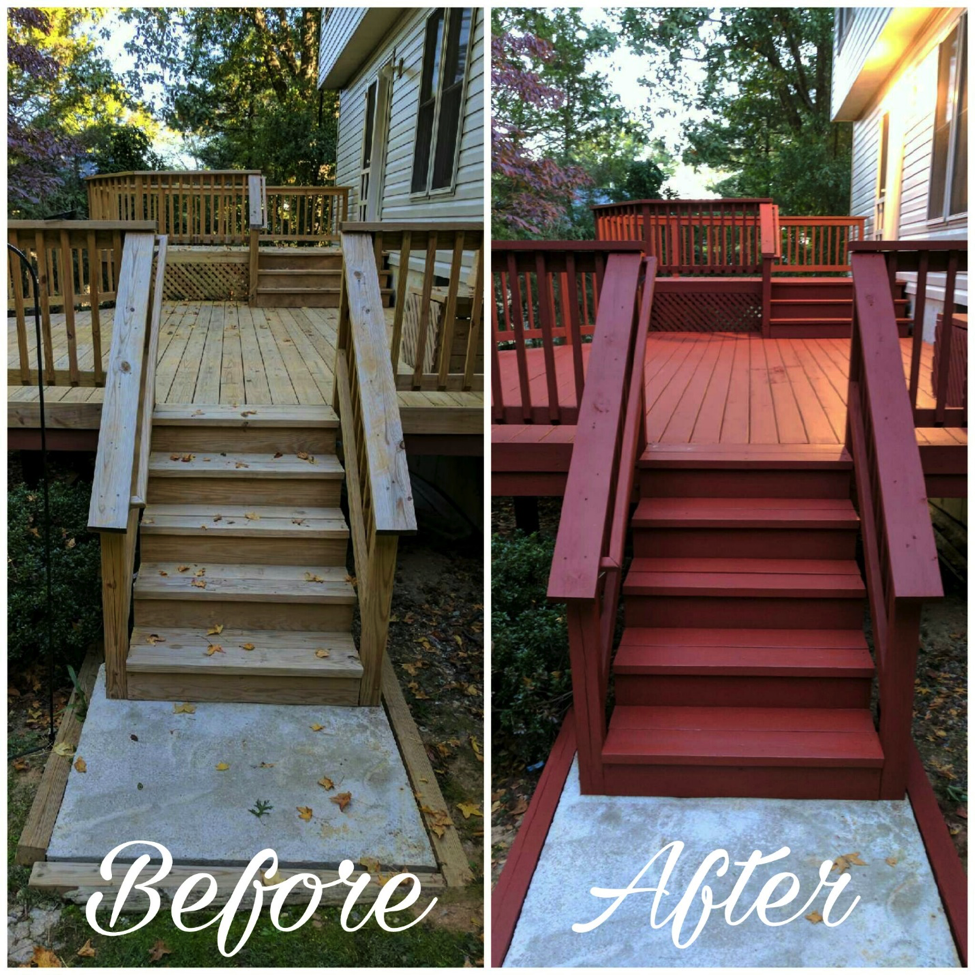Seal the Charm: Professional Fence Staining and Sealing Solutions
Seal the Charm: Professional Fence Staining and Sealing Solutions
Blog Article
Choosing the Right Discoloration for Your Fence: Tips and Considerations
When it comes to preserving and improving the look of your fencing, selecting the right stain is vital. We will certainly explore the various kinds of fencing discolorations, factors to consider prior to picking a tarnish, tips for preparing your fence for discoloration, and the differences between oil-based and water-based stains. Additionally, we will delve right into picking the ideal discolor color to complement your fence and boost your exterior area.
Recognizing Various Types of Fence Stains

On the various other hand, water-based stains are made from acrylic or latex and use a more refined shade to the wood. Water-based stains are less complicated to clean up and have a much faster drying time compared to oil-based discolorations.
Picking in between oil-based and water-based discolorations depends upon numerous elements, consisting of personal choice, the desired look, and the degree of maintenance needed. Oil-based spots are recommended for surround high-traffic areas or those regularly exposed to extreme climate condition. fence staining and sealing. Water-based stains, on the various other hand, are a preferred choice for fence domestic areas where appearance and ease of use are vital
Comprehending the differences in between water-based and oil-based stains aids home owners make an informed choice when picking the appropriate tarnish for their fence. Taking into consideration the details requirements of the fence, such as its location, direct exposure to sunlight, and desired visual, will guarantee that the chosen tarnish offers long-lasting defense and improves the overall elegance of the fence.
Factors to Consider Prior To Selecting a Stain

Various types of timber take in discolorations in a different way, resulting in differing levels of color intensity and durability. Additionally, certain woods might be extra prone to problems like rot or insect invasion, which might impact the selection of tarnish to protect and protect the fence.
The environment and climate condition in your location need to additionally be considered. If you reside in an area with severe winter seasons or high humidity, you may require a discolor that supplies extra protection versus wetness and UV rays. If your fencing is subjected to direct sunshine for lengthy periods, a stain with UV preventions can aid stop fading and discoloration.
Last but not least, it is very important to consider your wanted visual. Different stains provide various shades and finishes, permitting you to personalize the appearance of your fencing (fence staining). Consider the total design and style of your residential property, as well as any kind of local guidelines or homeowner association standards that might dictate the acceptable tarnish shades
Tips for Preparing Your Fencing for Discoloration
Cleaning up the fencing is an important step as it removes dust, gunk, and any kind of previous layers that might interfere with the staining process. Scrub the surface carefully, paying additional interest to locations with stubborn discolorations or mold and mildew.
After cleansing, enable the fence to dry completely. fence staining. This step is important as discoloring a damp or moist surface can result in poor attachment and an irregular surface. Depending upon the climate condition, it might take anywhere from a few hours to a few days for the fencing to completely dry thoroughly. Ensure that the fencing is totally dry before waging the discoloration procedure.
Prior to discoloration, examine the fencing for any type of damages, such as loosened boards or nails. This product helps to open up the wood pores, enabling the stain to permeate much more properly and equally.

Comparing Oil-Based and Water-Based Spots
When picking a stain for your fencing, it is necessary to compare the qualities and benefits of oil-based and water-based discolorations. Both sorts of spots have their own benefits and considerations, so it is crucial to recognize the differences in between them.
Oil-based stains are recognized for their toughness and resistance to tear and wear. In addition, oil-based discolorations tend to last longer than water-based discolorations, making them a preferred choice for fences.
On the other hand, water-based stains are much more environmentally pleasant and easier to cleanse up. They might not offer the exact same level of defense as oil-based discolorations, particularly in severe weather conditions.
Inevitably, the selection between oil-based and water-based stains relies on your details requirements and preferences. Consider factors such as durability, ecological effect, and simplicity of application when making your decision. Consulting with a professional or looking for suggestions from professionals can also aid make certain that you pick the ideal discolor for your fence.
Choosing the Right Discoloration Color for Your Fencing
The choice of a suitable tarnish color for your fence is a vital aspect of boosting its visual appeal and enhancing the general design of your exterior area (deck staining). The appropriate stain shade can transform a level, common fencing into a striking focal factor that includes deepness and character to your property
When selecting a stain color for your fencing, it is essential to think about the design and design of your home. Earthy tones such as browns and neutrals can develop a warm and welcoming look if you have a timeless or conventional style home. On the other hand, if you have a contemporary or contemporary home, you might consider going with bold and vibrant colors that make a declaration.
An additional variable to take into consideration is the natural environments of your residential or commercial property. If you have a view publisher site lot of greenery, a stain shade that enhances the all-natural landscape, such as environment-friendlies or crimsons, can produce a natural and unified appearance.
In addition, it's worth taking into consideration the maintenance needed for different stain shades. Lighter shades often tend to show dust and wear more easily, while darker shades can conceal blemishes and need much less regular touch-ups.
Eventually, the choice of discolor shade for your fence must reflect your individual style and choices - deck staining nashville tn. Put in the time to speak with and discover different alternatives with professionals if required, to ensure that you choose the excellent stain shade that enhances the charm and allure of your fence
Final Thought
In verdict, when it concerns selecting the right discolor for your fencing, it is necessary to comprehend the various kinds of stains offered and consider aspects such as toughness and wanted look. Preparing the fencing appropriately prior to discoloration is essential for accomplishing optimum results. Furthermore, comparing water-based and oil-based discolorations can aid determine the most effective option for your particular requirements. Choosing the ideal tarnish shade can improve the general looks of your fencing.
We will explore the various kinds of fence discolorations, variables to take into consideration before choosing a tarnish, ideas for preparing your fence for discoloration, and the differences between water-based and oil-based discolorations.Setting apart in between oil-based and water-based spots is essential when understanding different kinds of fence stains. Water-based discolorations are much easier to clean up and have a much faster drying time compared to oil-based spots. Additionally, oil-based discolorations tend to last longer than water-based discolorations, making them a prominent choice for fencings.
In final thought, when it comes to choosing the ideal stain for your fence, it is vital to comprehend the various types of discolorations offered and take into consideration elements such as sturdiness and wanted appearance.
Report this page